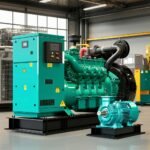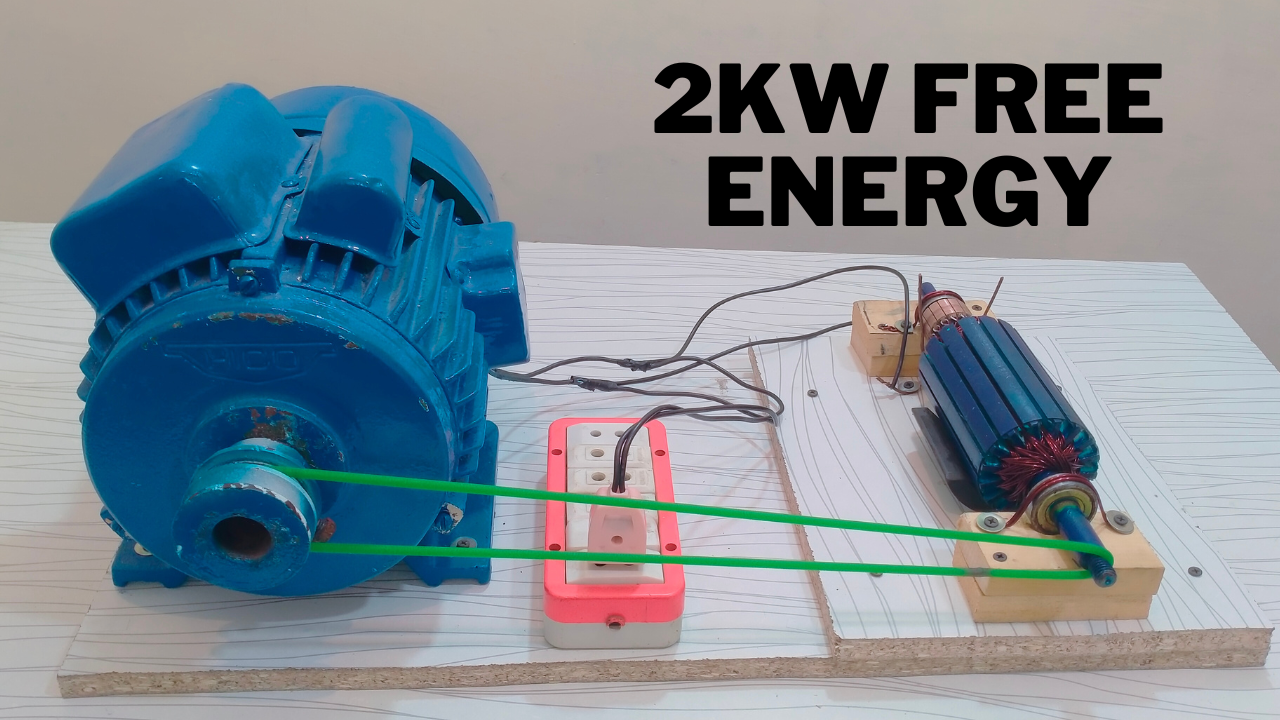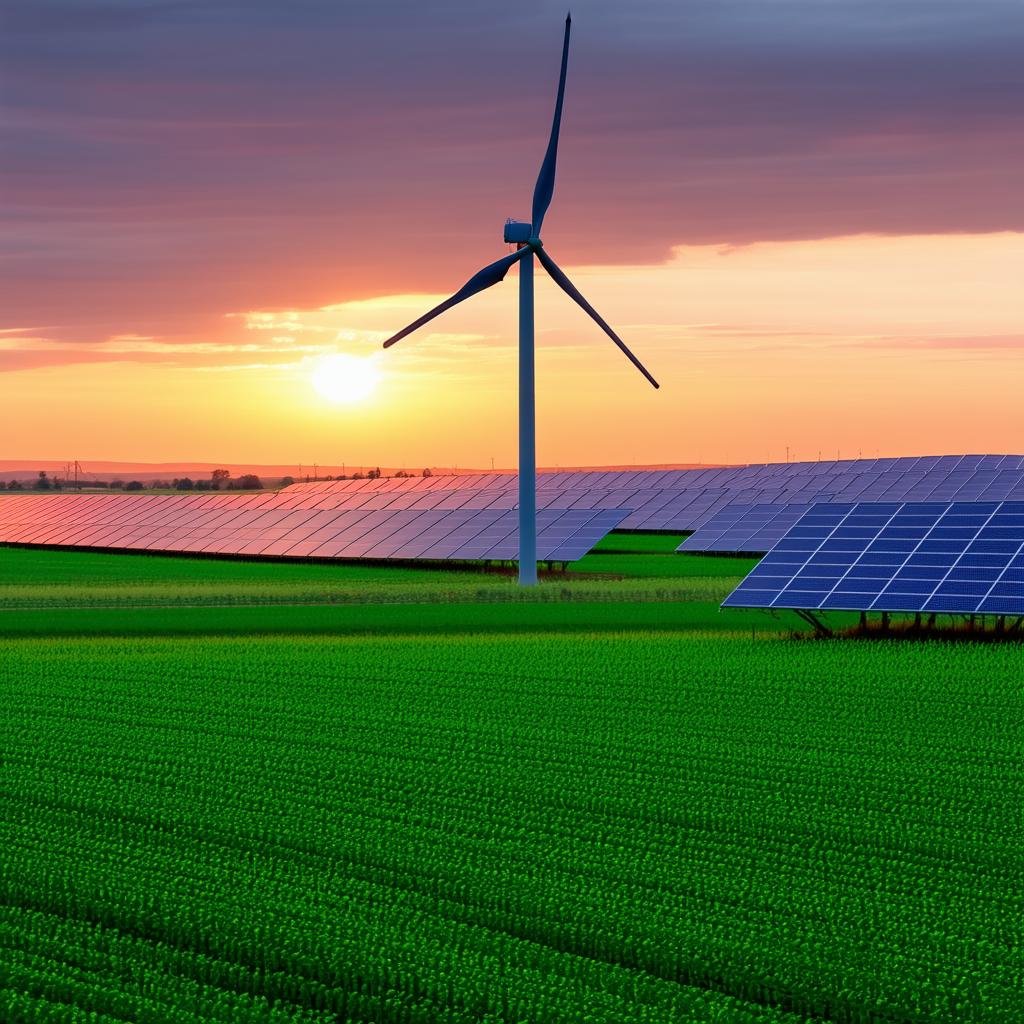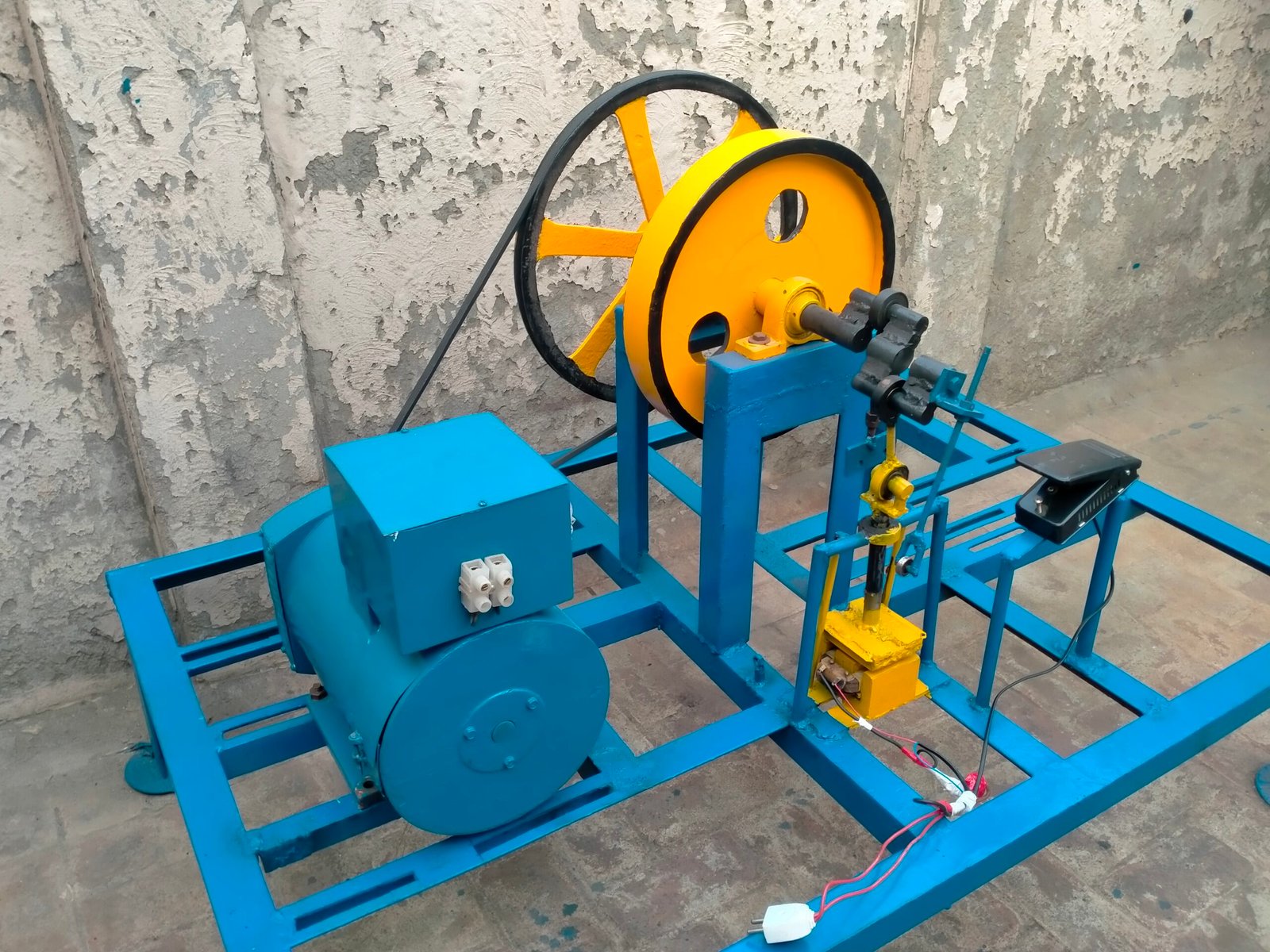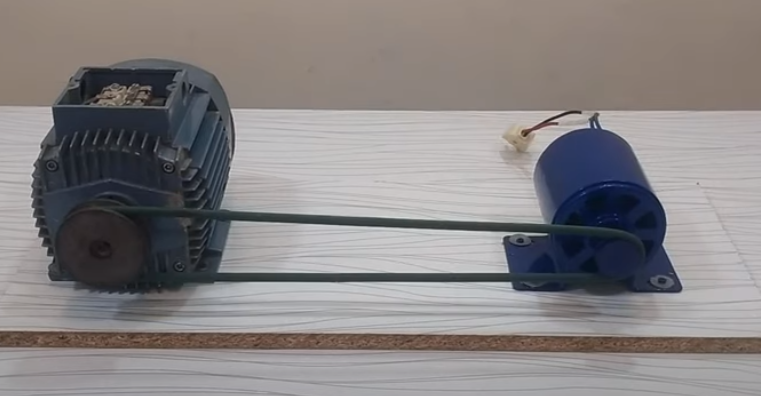How To Generate 2KW Free Energy 220V With Homemade Alternator At Home Diy Experiment
In our quest to explore the realm of renewable energy, we’ve embarked on a journey to unravel the secrets of generating 2KW free energy 220V with a homemade alternator at home. This DIY experiment, a testament to the power of human ingenuity, is a step towards sustainable living, reducing our carbon footprint, and embracing a future powered by renewable energy sources.
The process of generating 2KW free energy 220V with a homemade alternator is a fascinating blend of science, engineering, and creativity. It involves the conversion of mechanical energy into electrical energy, a principle that forms the basis of how an alternator functions. The alternator, a key component in this experiment, is a device that converts mechanical energy, typically from a rotating shaft, into electrical energy.
To begin with, we need to understand the components required for this experiment. The primary component is the alternator. A homemade alternator can be built using a variety of materials, including copper wire, magnets, and a rotating shaft. The copper wire is wound around a core to form a coil, which is then placed in close proximity to the magnets. The rotating shaft, attached to the coil, spins the coil within the magnetic field, inducing a flow of electricity.
The next component is the power inverter. This device is responsible for converting the direct current (DC) produced by the alternator into alternating current (AC). The power inverter is crucial because most household appliances operate on AC power.
The third component is the battery bank. The battery bank stores the electrical energy produced by the alternator, allowing for the energy to be used when needed. The size of the battery bank will depend on the amount of energy you wish to store.
The final component is the charge controller. This device regulates the flow of electricity from the alternator to the battery bank, preventing overcharging and ensuring the longevity of the batteries.
Now, let’s delve into the process of generating 2KW free energy 220V with a homemade alternator. The first step involves building the alternator. The copper wire is wound around a core to form a coil, which is then placed in close proximity to the magnets. The rotating shaft, attached to the coil, spins the coil within the magnetic field, inducing a flow of electricity.
The electricity produced by the alternator is direct current (DC). However, most household appliances operate on alternating current (AC). This is where the power inverter comes into play. The power inverter converts the DC power into AC power, making it suitable for use in household appliances.
The electricity produced by the alternator is then stored in the battery bank. The size of the battery bank will depend on the amount of energy you wish to store. The charge controller regulates the flow of electricity from the alternator to the battery bank, preventing overcharging and ensuring the longevity of the batteries.
In conclusion, generating 2KW free energy 220V with a homemade alternator at home is a feasible and sustainable solution for our energy needs. This DIY experiment not only provides a practical application of scientific principles but also paves the way for a future powered by renewable energy sources. By harnessing the power of human ingenuity, we can take a step towards sustainable living, reduce our carbon footprint, and embrace a future powered by renewable energy sources.
Introduction to 2KW Free Energy Generation
Harnessing free energy is a concept that has intrigued scientists and DIY enthusiasts alike. The idea of generating 2KW of free energy at 220V using a homemade alternator is not only fascinating but also a practical solution to energy needs. This article will guide you through the process, step by step, to help you create your own energy source at home.
In our quest to understand the concept of free energy generation, we delve into the intricate details of this revolutionary technology, exploring its potential to transform the world as we know it. Free energy generation, a concept that has been the subject of numerous debates and discussions, is a promising solution to the world’s ever-growing energy needs. It is a concept that transcends the traditional boundaries of energy production, offering a sustainable and environmentally friendly alternative to conventional energy sources.
The principle of free energy generation is rooted in the laws of physics, particularly the law of conservation of energy. This law states that energy cannot be created or destroyed, but can only be transformed from one form to another. Free energy generation leverages this principle, harnessing the abundant and untapped energy sources in our environment and converting them into usable forms of energy.
The potential applications of free energy generation are vast and varied. From powering homes and industries to fueling vehicles and spacecraft, the possibilities are virtually limitless. The technology has the potential to revolutionize the energy sector, ushering in a new era of clean, sustainable, and affordable energy.
However, the journey towards realizing the full potential of free energy generation is fraught with challenges. The technology is still in its nascent stages, and much research and development is needed to make it a viable and reliable source of energy. There are also regulatory and policy hurdles to overcome, as well as public perception and acceptance issues.
Despite these challenges, the future of free energy generation looks promising. With advancements in technology and increasing awareness about the need for sustainable energy solutions, the concept of free energy generation is gaining traction. It is a field that is ripe for innovation and investment, and one that holds the promise of a sustainable and energy-efficient future.
In conclusion, free energy generation is a groundbreaking concept that has the potential to redefine the way we produce and consume energy. It is a technology that is poised to disrupt the energy sector, offering a sustainable and environmentally friendly alternative to conventional energy sources. As we continue to explore and develop this technology, we are not only paving the way for a sustainable future, but also unlocking new opportunities for innovation and growth.
In our exploration of free energy generation, we have only scratched the surface. There is much more to learn and discover, and we invite you to join us on this exciting journey. Together, we can unlock the full potential of free energy generation, and usher in a new era of sustainable and affordable energy.
Understanding the Basics of 2KW Free Energy Generation
In our quest to comprehend the fundamentals of energy generation, we delve into the intricate mechanisms that power our world. Energy, the lifeblood of our modern society, is a complex entity that we often take for granted. Yet, the process of generating this vital resource is a marvel of scientific and technological innovation. From the colossal turbines of hydroelectric dams to the intricate circuitry of solar panels, each method of energy generation has its unique characteristics, advantages, and challenges.
At the heart of energy generation lies the principle of energy conversion. This is the process of transforming one form of energy into another, a concept that is fundamental to all energy generation methods. For instance, in a coal-fired power plant, the chemical energy stored in coal is converted into thermal energy through combustion. This thermal energy is then used to produce steam, which drives a turbine to generate mechanical energy. Finally, this mechanical energy is converted into electrical energy through a generator.
However, the process of energy generation is not limited to traditional methods like coal, gas, or nuclear power. Renewable energy sources, such as wind, solar, and hydroelectric power, are increasingly being harnessed due to their sustainability and minimal environmental impact. Wind energy, for instance, utilizes the kinetic energy of wind to turn turbines, which then generate electricity. Solar energy, on the other hand, employs photovoltaic cells to convert sunlight directly into electricity.
Hydroelectric power, one of the oldest and most established forms of renewable energy, harnesses the potential energy of water stored in dams. The water is released to flow through turbines, generating electricity in the process. Meanwhile, geothermal energy taps into the thermal energy stored beneath the Earth’s surface to generate electricity, providing a reliable and constant source of power.
In our exploration of energy generation, we also delve into the concept of energy efficiency. This refers to the ratio of useful output energy to the total input energy. In essence, it is a measure of how effectively a system converts one form of energy into another. Energy efficiency is a critical factor in energy generation, as it directly impacts the cost, sustainability, and environmental impact of energy production.
Moreover, we examine the challenges and opportunities in energy generation. From the environmental impact of fossil fuels to the intermittency issues of renewable energy, each method of energy generation presents its unique set of challenges. However, with these challenges come opportunities for innovation and improvement. Through advancements in technology and policy, we can optimize our energy generation methods to be more efficient, sustainable, and environmentally friendly.
In conclusion, understanding the basics of energy generation is a journey into the heart of our modern society. It is a journey that reveals the intricate mechanisms that power our world, the challenges we face, and the opportunities that lie ahead. As we continue to innovate and improve our energy generation methods, we are not only powering our world but also shaping our future.
What is an Alternator?
An alternator is a device that converts mechanical energy into electrical energy. It is a key component in many energy generation systems, including the one we will be creating in this DIY experiment. In our quest to understand the intricacies of an automobile, we delve into the heart of its electrical system – the alternator. The alternator, a term often heard but seldom understood, is a pivotal component that ensures the smooth functioning of your vehicle. It’s a powerhouse, a dynamo, that breathes life into your car’s electrical system, keeping it charged and ready for the journey ahead.
The alternator, in its most basic form, is an electrical generator that converts mechanical energy to electrical energy in the form of alternating current, hence its name. It’s a marvel of engineering, a testament to human ingenuity, and a critical cog in the complex machinery that is your vehicle.
The alternator’s primary role is to supply power to the electrical system while the engine is running and recharge the battery after start-up. It’s a tireless workhorse, constantly generating power to keep your headlights bright, your radio playing, and your battery charged.
The alternator is composed of several key components, each playing a crucial role in its operation. The rotor, stator, diode assembly, and voltage regulator are the main components that work in harmony to generate and regulate the electrical power. The rotor, driven by the engine’s crankshaft, spins inside the stator, creating an alternating magnetic field. This magnetic field induces a flow of electricity in the stator, which is then converted to direct current by the diode assembly. The voltage regulator ensures that the output voltage remains constant, protecting the battery and other electrical components from voltage spikes.
The alternator’s efficiency and reliability are a testament to its design and construction. It’s built to last, designed to withstand the rigors of daily use, and engineered to deliver consistent performance. However, like any mechanical component, it’s not immune to wear and tear. Regular maintenance and timely replacement of worn-out parts can ensure that your alternator continues to function at its best, keeping your vehicle’s electrical system in top shape.
In conclusion, the alternator is a vital component of your vehicle’s electrical system. It’s the heart that pumps life into your car, the dynamo that keeps it charged and ready for the road. Understanding its function and importance can help you maintain your vehicle better and ensure a smoother, more reliable driving experience. So, the next time you turn the ignition key, spare a thought for the humble alternator, the unsung hero under the hood.
The Principle of 2KW Free Energy
Free energy refers to the energy that is available from the natural environment. This can be harnessed and converted into usable power, reducing our reliance on traditional energy sources and contributing to a more sustainable future.
In our exploration of the fascinating concept of “The Principle of Free Energy,” we delve into the intricate details of this fundamental principle that governs the universe’s energy dynamics. The principle of free energy, a cornerstone of thermodynamics, is a captivating subject that intertwines the realms of physics, chemistry, and biology, providing a comprehensive understanding of energy transformations. It is a principle that underpins the very fabric of life and non-life processes, from the simple act of boiling water to the complex mechanisms of cellular metabolism.
The term ‘free energy,’ coined by the American scientist Willard Gibbs, refers to the energy in a system that is available to perform work. It is a measure of a system’s capacity to change, a concept that is central to understanding the direction and spontaneity of chemical reactions. The principle of free energy is a testament to the universe’s unyielding pursuit of equilibrium, a state of minimum free energy.
In the realm of thermodynamics, the Gibbs free energy equation, ΔG = ΔH – TΔS, is a mathematical representation of this principle. Here, ΔG represents the change in free energy, ΔH is the change in enthalpy or total energy, T is the absolute temperature, and ΔS is the change in entropy or disorder of the system. This equation elegantly encapsulates the interplay between energy, entropy, and temperature, providing profound insights into the nature of energy transformations.
The principle of free energy is not just confined to inanimate matter but extends its influence to the living world. It is the driving force behind life’s myriad processes, from the synthesis of biomolecules to the generation of ATP, the energy currency of cells. The principle of free energy is the unseen hand that guides the course of biological evolution, favoring those organisms that can efficiently harness energy from their environment.
In the context of sustainable energy solutions, the principle of free energy is a beacon of hope. It is the guiding principle behind the development of energy-efficient technologies and renewable energy sources. By understanding and applying the principle of free energy, we can optimize energy utilization, minimize waste, and pave the way for a sustainable future.
In conclusion, the principle of free energy is a fundamental concept that permeates every aspect of our existence. It is a principle that unifies the physical and biological worlds, providing a holistic understanding of the universe’s energy dynamics. By delving into the intricacies of the principle of free energy, we not only gain profound insights into the workings of the universe but also find solutions to some of the most pressing challenges of our time.
Building Your Homemade Alternator
In our quest to master the art of self-sufficiency, we’ve embarked on a journey to explore the intricacies of building your homemade alternator. This endeavor, while seemingly daunting, is a testament to our innovative spirit and our relentless pursuit of knowledge. We’re not just constructing a device; we’re crafting a symbol of our resilience, our ingenuity, and our commitment to sustainable living.
The heart of our homemade alternator lies in its rotor and stator, the dynamic duo responsible for the magic of electromagnetic induction. The rotor, a rotating component, is a magnet that creates a magnetic field. The stator, a stationary component, houses the conductive wire coils. As the rotor spins, it generates a changing magnetic field that induces an electric current in the stator’s coils. This is the fundamental principle behind our homemade alternator, a principle that has powered our civilization for over a century.
To build our homemade alternator, we’ll need a few key materials. A strong neodymium magnet will serve as our rotor, while a set of copper wire coils will form our stator. We’ll also need a shaft for the rotor to spin on, a housing to hold everything together, and a rectifier to convert the alternating current (AC) produced by the alternator into direct current (DC) that our devices can use.
The construction process begins with winding our copper wire coils. This task requires patience and precision, as the efficiency of our alternator hinges on the quality of these coils. We’ll then mount the coils onto a sturdy frame, ensuring they’re evenly spaced and securely fastened. Next, we’ll attach our neodymium magnet to the shaft and position it in the center of the coils. Once everything is in place, we’ll encase the assembly in a protective housing, connect the rectifier, and voila – our homemade alternator is ready to generate electricity.
But our journey doesn’t end here. We’ll need to test our homemade alternator, fine-tune its performance, and integrate it into our power system. We’ll also need to maintain it regularly, ensuring it continues to serve us reliably and efficiently.
Building your homemade alternator is more than a DIY project; it’s a testament to our ability to harness the laws of physics, to convert raw materials into a functional device, and to generate our own electricity. It’s a journey of discovery, of learning, and of empowerment. And we’re here to guide you every step of the way, providing you with the knowledge, the tools, and the confidence to build your homemade alternator and take control of your energy future.
So, let’s embark on this journey together. Let’s build our homemade alternator, let’s learn, let’s innovate, and let’s empower ourselves. Because we’re not just building a device; we’re building a brighter, more sustainable future.
Gathering the Necessary Materials
To build your homemade alternator, you will need a few basic materials. These include a rotor, a stator, a drive belt, and a voltage regulator. You will also need some basic tools such as a screwdriver, pliers, and a multimeter.
Assembling the Alternator
The assembly process involves attaching the rotor to the stator, connecting the drive belt, and installing the voltage regulator. This process requires careful attention to detail to ensure the alternator functions correctly.
Connecting the Alternator to a Power Source
Once your alternator is assembled, it’s time to connect it to a power source. This could be a wind turbine, a water wheel, or even a bicycle. The mechanical energy from these sources will be converted into electrical energy by the alternator.
Regulating the Voltage
The voltage regulator plays a crucial role in ensuring the energy produced is at the correct voltage. It maintains a constant output of 220V, which is suitable for most household appliances.
Safety Precautions When Working with Electricity
In our collective pursuit of understanding and mastering the world around us, we’ve harnessed the power of electricity, a force that has revolutionized our lives in countless ways. However, as we delve into the realm of electrical work, it’s crucial to remember that this powerful force can also pose significant risks if not handled with the utmost care. Therefore, we’re here to guide you through the essential safety precautions when working with electricity, a topic of paramount importance that cannot be overstated.
Firstly, it’s imperative to disconnect the power before starting any electrical work. This might seem like an obvious step, but it’s one that’s often overlooked in the rush to get the job done. Remember, even a small amount of electrical current can cause serious injury or even death. Therefore, always ensure that the power is off before you start working.
Secondly, use insulated tools. These are specifically designed to protect you from accidental electrical contact. The insulation on these tools acts as a barrier, preventing electricity from reaching your body. It’s a simple precaution that can make a significant difference in your safety.
Thirdly, wear appropriate protective gear. This includes rubber gloves and boots, safety glasses, and flame-resistant clothing. These items provide an additional layer of protection, shielding your body from electrical burns and shocks.
Fourthly, never work on electrical systems in wet conditions. Water is a powerful conductor of electricity, and working in wet conditions significantly increases the risk of electrical shock. If you must work in a damp environment, use a Ground Fault Circuit Interrupter (GFCI) to help prevent shocks.
Fifthly, be aware of your surroundings. Be mindful of any power lines or electrical circuits in your vicinity. Maintain a safe distance from them, and always assume that they are live.
Lastly, get proper training. Understanding how electricity works and how to work safely with it is crucial. This knowledge can help you avoid common mistakes and prevent accidents.
In conclusion, working with electricity requires a high level of caution and respect for the power it holds. By following these safety precautions, you can ensure that you’re doing everything in your power to protect yourself and those around you. Remember, safety should never be an afterthought; it’s an integral part of every task. So, let’s make safety a priority, not just in electrical work, but in every aspect of our lives.
Importance of Safety
Working with electricity, especially at high voltages, can be dangerous. It’s essential to take precautions to protect yourself and others around you.
Safety Measures to Follow
Always wear protective gear, work in a well-ventilated area, and never work on electrical equipment while it’s connected to a power source.
Conclusion
Generating 2KW of free energy at 220V with a homemade alternator is a rewarding DIY project. Not only does it provide a practical solution to energy needs, but it also contributes to a more sustainable future. With careful planning, the right materials, and a focus on safety, you can successfully complete this project at home.
Frequently Asked Questions
What is the role of an alternator in 2KW Free Energy generation?
An alternator converts mechanical energy into electrical energy. It’s a key component in many energy generation systems.
What is free energy?
Free energy refers to the energy that is available from the natural environment. This can be harnessed and converted into usable power.
What materials do I need to build a homemade alternator?
You will need a rotor, a stator, a drive belt, and a voltage regulator. You will also need some basic tools such as a screwdriver, pliers, and a multimeter.
How do I regulate the voltage of the 2KW Free Energy produced?
The voltage regulator maintains a constant output of 220V, which is suitable for most household appliances.
What safety precautions should I take when working with electricity?
Always wear protective gear, work in a well-ventilated area, and never work on electrical equipment while it’s connected to a power source.

